Best Hashtable PowerShell Tools to Buy in December 2025
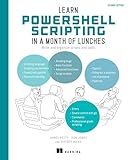
Learn PowerShell Scripting in a Month of Lunches, Second Edition: Write and organize scripts and tools


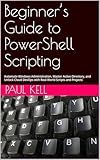
Beginner’s Guide to PowerShell Scripting: Automate Windows Administration, Master Active Directory, and Unlock Cloud DevOps with Real-World Scripts and Projects


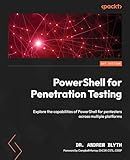
PowerShell for Penetration Testing: Explore the capabilities of PowerShell for pentesters across multiple platforms


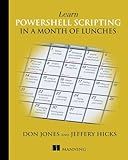
Learn PowerShell Scripting in a Month of Lunches


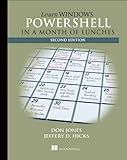
Learn Windows PowerShell in a Month of Lunches



PowerShell for Sysadmins: Workflow Automation Made Easy


To get the value only from a hashtable in PowerShell, you can use the hashtable's key to access the corresponding value. For example, if you have a hashtable named $hashTable and want to get the value associated with the key "key1", you can use $hashTable["key1"] to retrieve that value. This will return the value without showing the key itself.
How to get the values of a hashtable without the keys in PowerShell?
To get the values of a hashtable without the keys in PowerShell, you can use the Values property of the hashtable. Here's how you can do it:
# Define a hashtable with keys and values $hashTable = @{ key1 = "value1" key2 = "value2" key3 = "value3" }
Get the values of the hashtable without the keys
$hashTable.Values
This will return an array of just the values from the hashtable, without the keys.
How to get values from a hashtable that meet a certain criteria in PowerShell?
To get values from a hashtable that meet a certain criteria in PowerShell, you can use the Where-Object cmdlet. Here's an example:
$hashTable = @{ Name = "Alice" Age = 30 Location = "New York" }
$filteredValues = $hashTable.GetEnumerator() | Where-Object { $_.Value -gt 25 }
$filteredValues | ForEach-Object { Write-Host "$($_.Key): $($_.Value)" }
In this example, we have a hashtable $hashTable with Name, Age, and Location as keys. We want to get all values that are greater than 25. We use the GetEnumerator() method to iterate over the hashtable and then use the Where-Object cmdlet to filter out the values that meet the criteria. Finally, we use ForEach-Object to output the key-value pairs of the filtered values.
How to retrieve values from a hashtable and convert them to strings in PowerShell?
To retrieve values from a hashtable and convert them to strings in PowerShell, you can use the following steps:
- Define a hashtable with key-value pairs:
$hashTable = @{ Name = "John Smith" Age = 30 City = "New York" }
- Use a foreach loop to iterate through the hashtable and convert values to strings:
foreach ($key in $hashTable.Keys) { $value = $hashTable[$key] $stringValue = $value.ToString() Write-Output "$key: $stringValue" }
In this example, the foreach loop iterates through each key in the hashtable, retrieves the corresponding value, converts it to a string using the ToString() method, and then outputs the key-value pair as a string.
You can also access specific values in the hashtable directly by using the key:
$name = $hashTable["Name"].ToString() Write-Output "Name: $name"
This will retrieve the value associated with the key "Name" in the hashtable and convert it to a string before outputting it.
How to replace values in a hashtable in PowerShell?
To replace values in a hashtable in PowerShell, you can simply use the key of the hashtable to access the value you want to replace and assign a new value to it. Here's an example:
# Define a hashtable $hashTable = @{ Key1 = "Value1" Key2 = "Value2" Key3 = "Value3" }
Replace the value of Key2 with a new value
$hashTable['Key2'] = "NewValue"
Display the updated hashtable
$hashTable
In this example, we first define a hashtable with three key-value pairs. Then, we use the key 'Key2' to access the corresponding value and assign a new value "NewValue" to it. Finally, we display the updated hashtable to see the changes.
